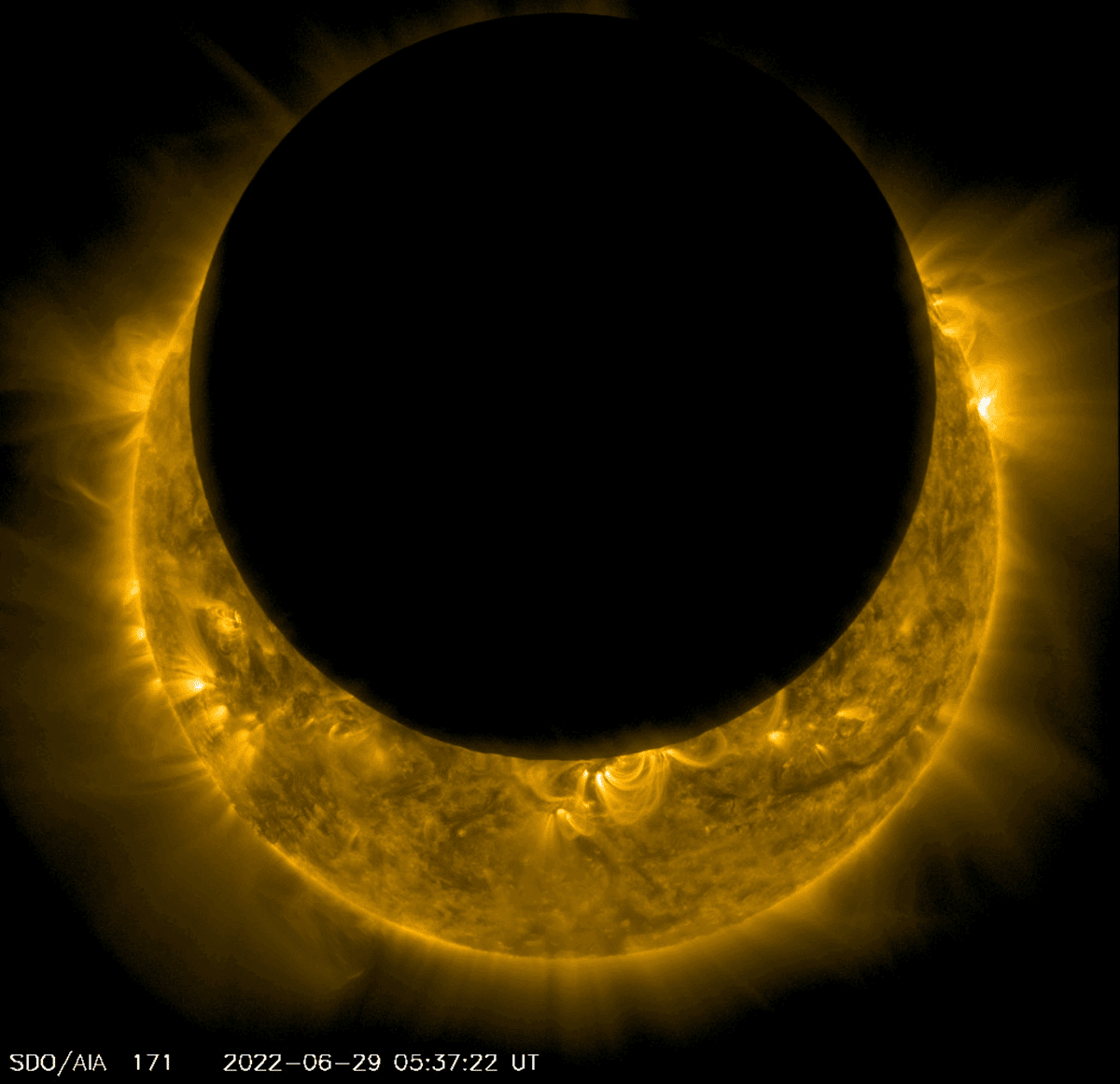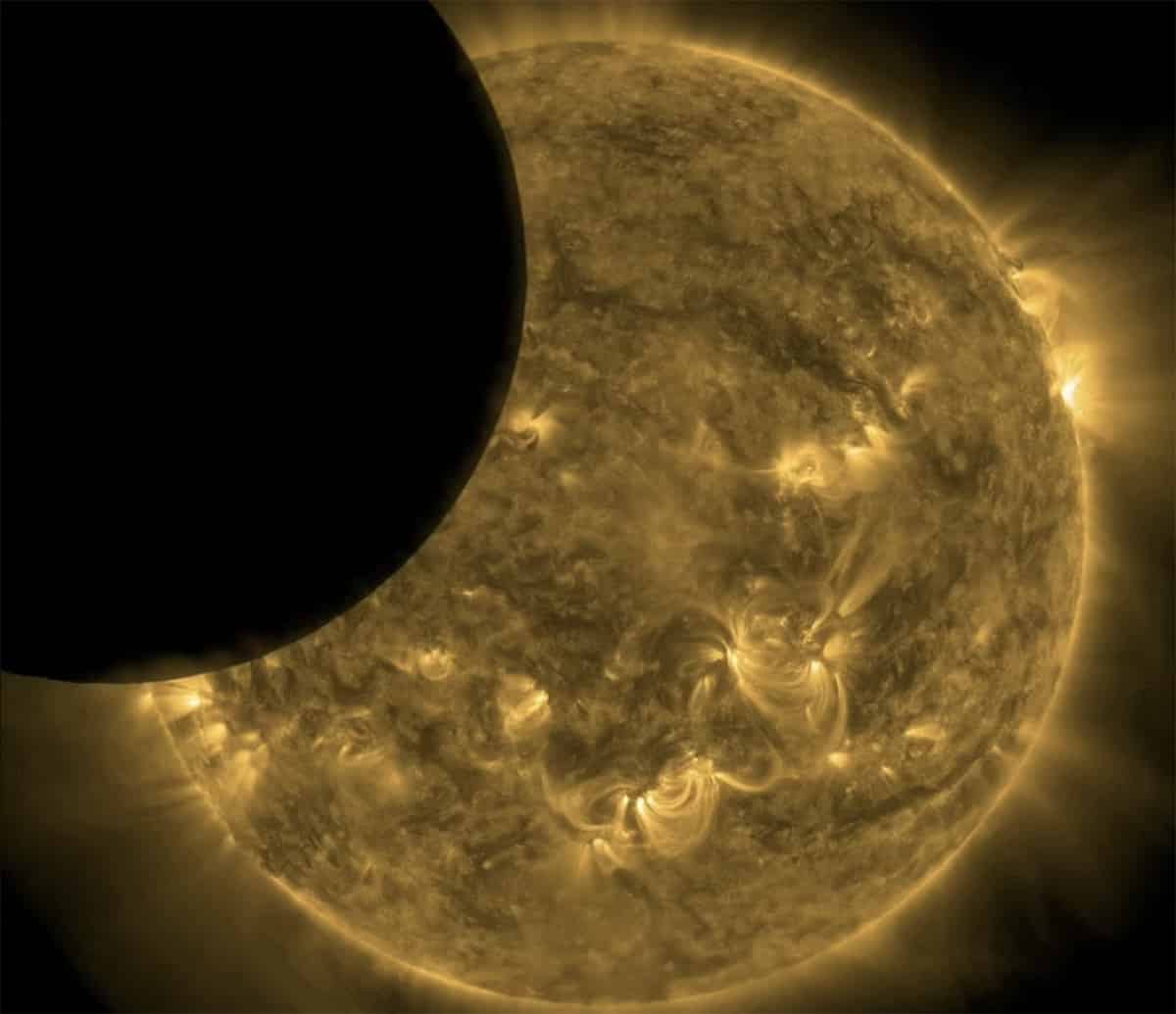
NASA's Solar Dynamics Observatory observed a solar eclipse on June 29, 2022. (Photo: NASA/SDO/AIA/LMSAL)
Human eyes should not gaze directly at the Sun on any regular day, let alone during a solar eclipse. However, NASA's hyper-modern technology has no such limitations. Their Solar Dynamics Observatory (SDO) tracks, photographs, and studies the Sun from space. This high-tech observation center captured stunning images of a solar eclipse on June 29, 2022—the fiery beauty is a view unmatched by any on Earth.
The eclipse occurred on Wednesday, June 29, 2022. SDO is a NASA mission to document and explore both space and Sun. SDO launched in February 2010 as a solar spacecraft under the partnership of NASA and the National Oceanic and Atmospheric Administration (NOAA). Solar flares and coronal mass ejections (CMEs) are of particular interest to the mission. CMEs—expulsions of plasma and magnetic field from the Sun—are a strange and confusing phenomenon which can disrupt power or GPS signals here on Earth.
With its high-powered imaging mechanisms, SDO captured the moon passing between it and the Sun. NASA has not yet officially spoken on the celestial event, but space enthusiasts note that the Moon's ridges were illuminated by the Sun behind it, including the Leibnitz and Doerfel mountain ranges. The entire phenomenon passed by in about 25 minutes. The Moon blocked about 67% of the Sun's flaming surface. This may also be the closest picture of the Sun's surface many people have seen. While images such as these may help scientists observe the Sun and learn more about its magnetic properties, they also can help them learn about the optics of the telescope itself. For the rest of us, these images are one more chance to marvel at the magnificence of our solar system.
NASA's Solar Dynamics Observatory (SDO) tracks, photographs, and studies the Sun from space.D

NASA's Solar Dynamics Observatory observed a solar eclipse on June 29, 2022. (Photo: NASA/SDO/AIA/LMSAL)
This high-tech observation center captured stunning images of a solar eclipse on June 29, 2022—the fiery beauty is a view unmatched by any on Earth.

NASA's Solar Dynamics Observatory observed a solar eclipse on June 29, 2022. (Photo: NASA/SDO/AIA/LMSAL)AD

NASA's Solar Dynamics Observatory observed a solar eclipse on June 29, 2022. (Photo: NASA/SDO/AIA/LMSAL)
No comments:
Post a Comment